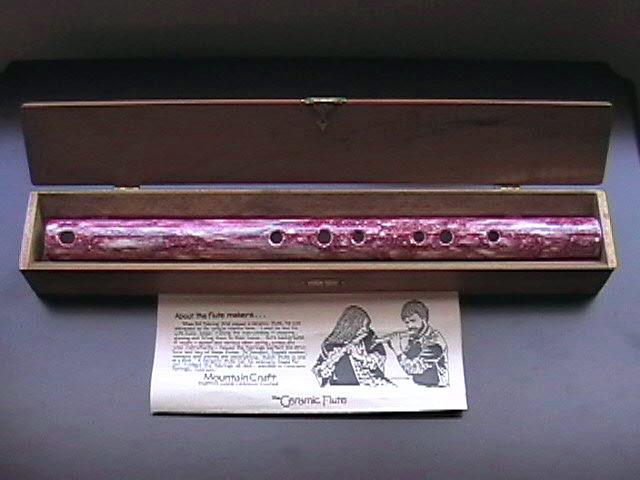![]()
![]()
This *was* the flute

In planning to take my "concert" flute in for a tune up, I wondered if that old
ceramic flute I bought 9 years ago would allow me to keep practicing. Last night, I searched the house high and low and eventually found it out in the garage.
Inspection showed a bug had taken up residence inside, but failed to persist in his living existance. I flushed him/her/it and contemplated the flute's ability to be "tuned up" with soap and water.
Then without thinking about the previously-known fact that this is not a 'C' flute, I put the flute to lips, sealed the six holes and played what I hoped was a low D. Not wonderful, not terrible. Up the scale with the only fingering I know from learning on my un-concert-ed flute, it sounded a little strange and came to an abrupt, silent halt at what I presumed was the second octave B.
The flute came with a fingering chart and info that says the flute is a 'G' flute. I tried the scale again with the "proper" fingering and managed to get the two octaves from G1 to G3, then put the flute back in the nice wood box I built and finished nine years ago. I put the box back into the garage. Perhaps another bug will get more use of the flute than I can.
--- update 6-27-02 ---
After posting the above on flutenet.com, I received an unsolicited offer to purchase the flute. I quickly searched the Internet to see if the person that made the flute was now a famous flute maker, that perhaps I was holding a "Bill Tybring Original", but no, he didn't make it big in flutes.
I negotiated a $30 price, put the flute into its box and sent it off to Canada.
The flute arrived broken, but was sort-of fixable with Cyano-acrylate glue. I sent the fellow his money back and have "closed the case" of the ceramic flute adventure.
© 2002 Alan McDonley. All rights reserved.